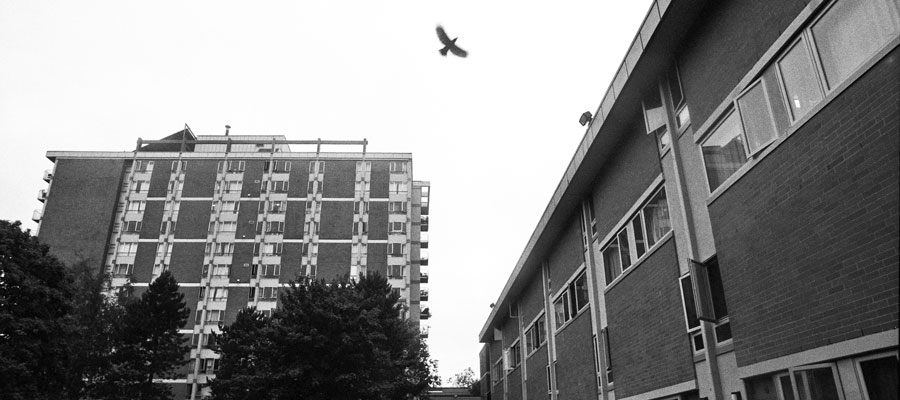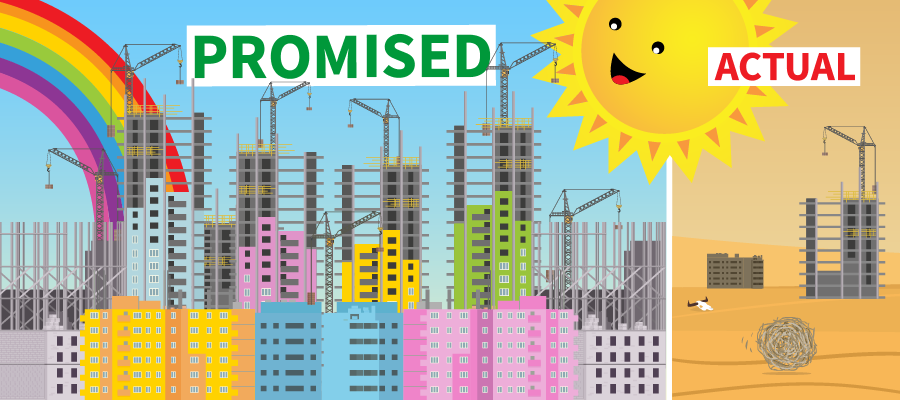Affordable housing and jobs: Now is the time to build

The BC government is spending millions on advertising to promote its actions on affordable housing. In Metro Vancouver, however, where the crisis is most acute, there is no sign that housing is going to be within reach of ordinary middle-class households any time soon.
.@MarcLeeCCPA takes a look at how BC can build the affordable housing people need, /and/ create good jobs https://t.co/lVqpOe1Gwv #bcpoli pic.twitter.com/wiF43Zqvzf
— The CCPA–BC (@CCPA_BC) March 17, 2017
The government deserves credit for its 15% foreign buyer tax introduced last August. This has dramatically deflated the volume of foreign money flowing into Metro Vancouver, which was driving double-digit increases in home prices with no connection to household incomes. The government has also aimed to facilitate purchases from first-time homebuyers through an exemption from paying property transfer tax as well as a new program of supplemental five-year interest-free loans. (Read my review of recent housing policy measures.)
But the painful reality remains, especially in Metro Vancouver: buying a home is still out of reach for a typical household. And ultra-low vacancy rates have made conditions worse for renters. This threatens to undermine our economy as young people are forced to leave and businesses struggle to attract people to move here.
Developers are partly right that we need more supply. But their version of supply—marketed as luxury investments for the super-rich—is deeply flawed.
Put simply, we need the public sector – all levels of government – to correct this market failure by building new dedicated affordable housing stock. This build-out should include a spectrum of housing options that work for people with different incomes and at different stages of their lives.
The painful reality remains: buying a home is still out of reach for a typical household.
So, how much is needed and what would it cost?
At a broad level, an estimated 145,000 households are in “core housing need”—spending more than 30% of their income on housing. First priority should be given to households in extreme housing need, but a ramped up building program could entertain other near-market rental and affordable ownership options.
Based on population growth in Metro Vancouver, the BC Non-Profit Housing Association estimates the region needs about 5,000 new rental units per year just to keep pace. Moreover, as BC’s population ages, substantial increases in housing services for seniors will be needed.
Given this, there is every reason for our governments to move forward with an ambitious build-out program that would see the construction of 5,000-10,000 new units of social or co-op housing per year.
With costs of about $250,000 per unit, this program would require upfront capital of $1.25 billion to $2.5 billion per year. That’s no small sum of money, but compared to BC’s $270 billion per year economy and an annual BC budget of $50 billion, it’s not outrageous either.
In several cases existing land owned by municipal, provincial and federal governments could be put on the table, and Development Cost Levies and Community Amenity Contributions could be waived as part of the municipal contribution, all of which would reduce the upfront costs.
But here’s the key: upfront capital costs would be more than paid back through the flow of rental income over the lifespan of the buildings. Even with subsidized rents, construction costs (including land) can be repaid over 25 to 30 years, after which the rental income represents revenue that can be reinvested in new housing or elsewhere in the economy.
An estimated 145,000 households are in “core housing need” – spending more than 30% of their income on housing.
Moreover, a progressive property surtax on high-value properties could also raise substantial revenues—about $1.7 billion per year in Metro Vancouver. This would tackle the wealth inequality that has grown enormously as a result of the past generation’s land ownership lottery.
A range of housing models could be supported through this mechanism, including residential care and assisted living for seniors, supportive housing, purpose-built rental stock and cooperatives as well as alternative ownership arrangements such as co-housing and community land trusts.
Besides building the affordable housing that people actually need, these proposals would create and support employment in the construction sector. The Canadian Housing and Mortgage Corporation reports that new Metro Vancouver housing starts in January and February were down 24% and 52% respectively compared to the same months in 2016. On an annualized basis that’s equivalent to 10,000 fewer units in construction. We should be cautious about reading too much into two months of data, but if that trend were to continue, 2017 would be the worst year for new housing construction since the economic downturn in 2009 and 2010.
The residential construction sector averages about 6.6 direct jobs per million dollars of investment, and 4.9 indirect jobs (up the supply chain) per million. So 5,000 units would create or support 8,125 direct and 6,125 indirect jobs, while a more ambitious plan of 10,000 units per year would support 16,250 direct and 12,250 indirect jobs.
It is important to note that most of this will replace private-sector-led housing starts with public-sector ones, meaning this would primarily protect and stabilize existing construction sector jobs. Building out publicly when private housing starts are sagging is what economists call “counter-cyclical policy,” and it is well advised right now.
Building 10,000 residential units per year would support 16,250 direct jobs.
There is nothing outlandishly new about this housing strategy. Between the early 1970s and early 1990s, BC used to build approximately 2,000 units of new social or co-op housing each year. The legacy of this work is evident today in the 700 non-profits that run the vast majority of social housing in BC. Total social and cooperative housing in the Metro Vancouver region was 50,349 units in 2014 – an incredibly valuable legacy of public investment, which is now some of the most-affordable housing in Metro Vancouver.
In 2016, the BC government committed to some modest affordable housing development, after years of significant neglect. The government claims its funding will result in a total of 4,900 units, spread over three to five years, although not all are new developments and many are outside of Metro Vancouver where the affordability crisis is most acute. While positive, a one-time investment of this size does not come anywhere near tackling the scale of the challenge before us. The federal government is hinting at some re-entry into the housing game, however, their announcements to date are also small relative to the challenge.
Much more could be done by senior levels of government, especially in partnership with local governments and non-profit community groups. Metro Vancouver’s public housing stock is only about 5% of the total, among the lowest in comparison to jurisdictions outside Canada.
In other locales, public housing has long been part of the solution. Perhaps one of the most renowned is Singapore, where 82% of residents live in 900,000 apartments built by the city-state’s Housing Development Board (and 90% of these residents own their homes). In Vienna, almost half of the total housing stock is social housing and the city acts as a developer.
With an election in sight, we need BC’s political parties to engage in a race to the top, putting new and substantial proposals on the table to build the affordable housing people need. This requires political will to put public capital on the table and to commit to a multi-decade build-out.
–
Learn more about our ideas for a bold and progressive BC jobs agenda »


